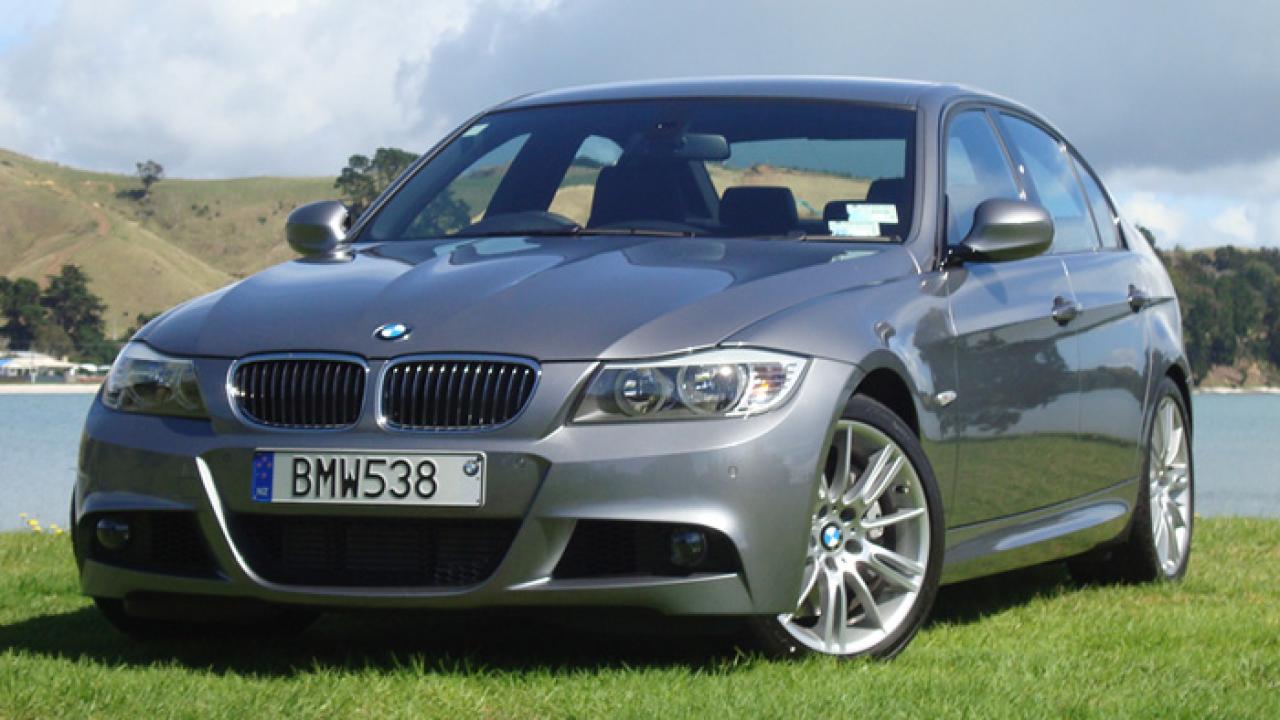New car report: More for less
The BMW 3 Series has always set the benchmark in its class. Since the first compact luxury 2 door E21 3 Series was unveiled to the world's press at the Munich Olympic Stadium in 1975, the 3 Series has been the car against which the competition has been measured.
Since those early days, the specification level of each new model surpassed its predecessor and competition became fierce. Over the decades, premium brands such as BMW became the aspiration of many buyers and customer demands increased.
In order to maintain premium brand customer expectation, BMW, along with other luxury motor vehicle distributors and dealers invested heavily in luxury facilities and customer loyalty programmes, continually devising new ways to delight their customers.
By the 1990s, New Zealand import restrictions were relaxed and used car importers seized an opportunity to ride on the back of manufacturers' investment. At the height of the market used BMW's were rolling off the ships from Japan at the rate of four to every one new car being sold through official BMW channels.
The BMW badge had become a desirable commodity
While the inflated number of BMWs on the road helped to increase BMW's parts and service business, the downside was that used car values began to erode. BMW - like many of their competitors - had become a victim of their own success, their dealers finding themselves having to compete with grey imports.
During 2008 it was announced that vehicles imported into New Zealand would soon be required to meet new stringent emission legislation. At around the same time the brakes came on the global economy and the fireball that had been the overheated car market had the fire hose aimed right at its epicentre.
As a result, the used car import business ground to a virtual standstill. In January 2008, 13,000 used passenger vehicles arrived in New Zealand. A year later, in January 2009 that figure was just 1900, or 85% down - the lowest number since 1988.
At the launch of BMW's new 3 Series LCI (Life Cycle Impulse - or facelift to you and I), held this week at BMW New Zealand's new Parts Distribution Centre, where it is clear a huge investment has been made, BMW NZ Managing Director Mark Gilbert opened his address by perhaps understating that we are in "interesting times".
Most new car distributors have announced price increases since January. However, Mr Gilbert announced that BMW plans to swim against the tide, throwing in more spec and much added value to the new 3 Series, and taking a razor to the pricelist at the same time.
By taking the approach of offering their customers the most highly optioned car at the best possible price, BMW reason that residual prices will begin to recover and ownership costs will reduce in the longer term.
The BMW E90 3 Series, launched in 2005, is still a solid benchmark
The E90 LCI model sees revised styling in areas of the grille, headlights, bonnet, tail lights and sill panels, giving the car a more sleek and sporty appearance.
Several cosmetic enhancements have been made inside the car, as well as simplifications to the iDrive functionality. But the real changes are in added equipment levels and BMW's new approach to doing business.
As an example, the outgoing 320i SE had a list price of $77,000. The new car now has added standard equipment including Park Distance Control front and rear, Cruise Control and Bluetooth preparation, which previously added $3,200 to the price tag pushing the retail price to over $80,000. The new price is now just $72,900.
The Innovations package which adds over $6,500 worth of equipment includes heated seats, USB interface and Navigation can now be had for just $1,300. So a vehicle that would have retailed at almost $87,000 is now $74,200, or a decrease of around 15%.
There are five engine options for the new 3 Series, two petrol and three diesel, which BMW claim offer superior dynamic performance and the lowest fuel consumption and exhaust emissions in their respective classes.
The 4 cylinder 320i and 6 cylinder 335i petrol engines have a High Precision Injection system providing clearly measurable fuel consumption benefits, achieved by means of new injectors located between the valves, injecting the fuel immediately adjacent to the spark plug. The piezo injectors carry the fuel at a pressure of up to 200 bar.
The top of the line 225kW 335i twin turbo petrol engine powers the car from 0 to 100km/h in just 5.6 seconds. This all aluminium engine is a three time winner of the international "Engine of the Year" award, including again in 2008.
Diesel engine options start with the 4 cylinder 320d. Fitted with a particulate filter, as is the entire diesel range, the 320d returns just 5.5 litres per 100km when mated to the 6 speed manual gearbox, or 6 litres for the Steptronic Auto. CO2 emissions are only 147g/km and 160g/km respectively, meeting Euro 5 emission standards.
Two 6 cylinder diesels, the 325d and Variable Twin Turbo 335d are offered. The 335d delivers 210kW and 580Nm of torque, sprinting to the open road speed limit in just 6 seconds.
The new E90 3 Series LCI continues to raise standards and set benchmarks. With its near perfect 50/50 weight distribution and award winning powerplants driving the rear wheels, it remains The Ultimate Driving Machine.





